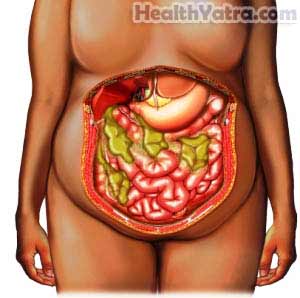Definition
A Jackson-Pratt drain (or JP drain) is a rubber tubing that may be placed after surgery. It may also be used with infections or injury that can cause a build up of fluid.
Reasons for Procedure
Fluid that collects inside the body can increase the chance of infection or other complications. The JP drain allows fluids to move out of the body. The drain may be placed:
- After surgery if large amounts of drainage are expected
- To drain fluids from an abscess or other infected areas
- To drain fluids from injury associated with fluid build up

Possible Complications
Complications are rare, but no procedure is completely free of risk. Your doctor will review a list of possible complications, which may include:
- Bleeding
- Infection
What to Expect
Prior to Procedure
Leading up to the procedure:
- If you have been injured, your doctor may order imaging tests to see the fluid that has collected. Images may be taken with:
- CT scan
- MRI scan
- Talk to your doctor about your medicines. You may be asked to stop taking some medicines up to one week before the procedure, like:
- Anti-inflammatory drugs (eg, aspirin )
- Blood thinners, such as clopidogrel or warfarin
- Do not eat or drink anything for eight hours before surgery.
- Arrange for a ride home from the hospital.
Anesthesia
General anesthesia will be used. It will block any pain and keep you asleep through the surgery.
Description of the Procedure
Once you are under anesthesia, your doctor will make an incision in your skin. The end of the drain tubing will be placed into the area where fluid has collected. The other end of the tubing will be connected to the squeeze bulb outside of your body. The doctor will remove the stopper from the bulb, squeeze it to create suction inside the drain system, and replace the stopper. This suction will pull the unwanted fluid out of your body. The doctor will then close the skin over the drain.
If you are having surgery, this JP drain will be inserted at the end of the operation.
Immediately After Procedure
If you are staying in the hospital, the nurses will care for and empty your drain.
How Long Will It Take?
15-20 minutes to place the JP drain
How Much Will It Hurt?
You may have mild to moderate pain where the JP drain is placed. Your doctor will recommend or prescribe medication to help with the pain.
Average Hospital Stay
This procedure is done in a hospital setting. The length of stay depends on the type of surgery you are having. You may be able to go home the same day if the surgery is minor.
Post-procedure Care
When you return home, do the following to help ensure a smooth recovery:
- Be sure to follow your doctor’s instructions .
- Learn how to empty and care for the drain at home.
- Ask your doctor if you can walk around with the JP drain.
- Avoid bumping the drain.
- Sleep on the side opposite of the drain. This will help you to avoid blocking the tubing or pulling it out of the suction bulb.
- Ask your doctor about when it is safe to shower, bathe, or soak in water.
- Ask your doctor what problems to watch for and when you should return for a follow-up appointment.
Removal of a drain depends on how fast you heal from the surgery or injury. Your doctor may remove the drain when there is less than 1-2 tablespoons (15-30 milliliters) of fluid per day being drained. If you have more than one drain, they may not be removed at the same time.
Call Your Doctor
After you leave the hospital, contact your doctor if any of the following occurs:
- You are unsure of how to care for your drain
- Drainage is greenish in color or has a bad smell
- Significant bleeding from the drain
- Pain at the incision
- Fever or chills
- End of the tube comes out of the incision
In case of an emergency, call for medical help right away.
